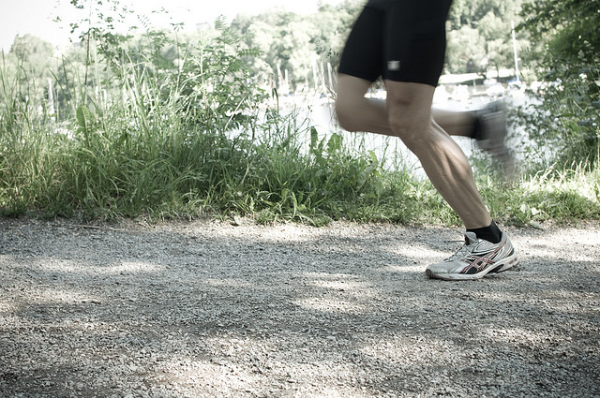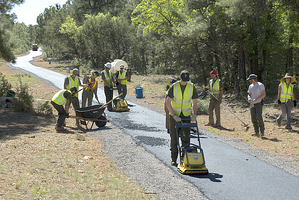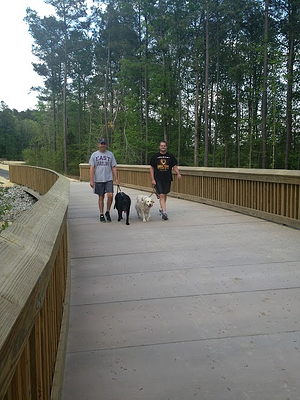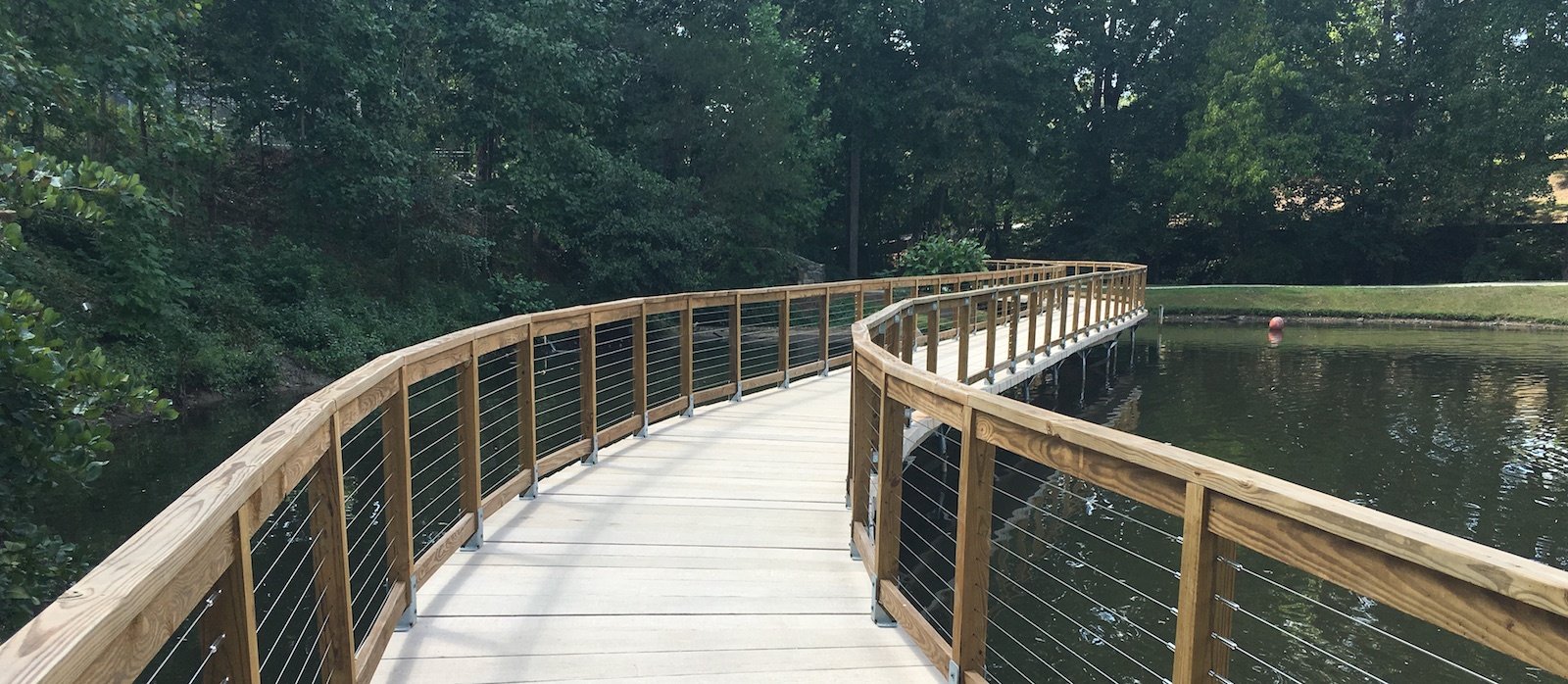Trails are quickly becoming a coveted amenity in urban spaces. No longer are trails limited to distant national parks and obscure, secluded spaces. They’re becoming an important part of our green spaces throughout towns and cities. Trails promote physical activity and alternative transportation through biking, running or walking.
Multi-use trail design, however, like any path or boardwalk, can incorporate a variety of construction materials for the trail surface. There is no one material that is right for every trail, and selecting the right one involves weighing the challenges of your project. Below are some of the biggest pros and cons of popular multi-use trail surface materials.
Weighing the Popular Materials in Multi-Use Trail Design
Gravel

Commonly used on more rural trails, gravel is often favored for its more natural look and its affordable front-end installation. Gravel is also easier on runners’ joints and good for flat areas outside of floodplains. This material does have drawbacks, however.
One of the biggest challenges with gravel is that it requires a great deal of maintenance and has a difficulty meeting ADA surface standards. With a gravel trail, it is hard to maintain consistent surface quality, and gravel erosion can cause environmental damage.
For bikers, steep gravel slopes (which also face the issue of gravel migration) and loose gravel are challenging to traverse. While gravel is better in terms of minimizing the impact on runners’ joints, the material has less stability for those on foot, whether they are running or walking.
Gravel is an affordable initial investment, but its frequent required maintenance over time does start to add up. For this reason, presenting a life cycle maintenance chart is a great way to demonstrate long-term planning to a client.
Asphalt

While asphalt doesn’t have the natural look that gravel does, it does have arguably the best initial trail surface — it is smooth and without cracks. For some projects, asphalt may be a happy medium between gravel and concrete - more sturdy than gravel but cheaper in initial cost than concrete.
So why not asphalt? Like gravel, an asphalt trail surface requires a lot of maintenance over the long haul. Asphalt is prone to cracking, particularly on the edges, thanks to growing vegetation, requiring designers to lay a few extra inches on the width of the trail to act as a buffer. Even then, there is a regular need to fill and seal cracks, and you can expect a complete overlay needed every 8 to 10 years. Crack-filling or sealcoating applications should be expected if an owner wants to extend the life of the asphalt trail.
While porous asphalt offers improved drainage, traditional asphalt trails have an impervious surface - impenetrable by water -which can cause issues with water runoff.
Concrete

Concrete, the final common material utilized in multi-use trail design, has many advantages but is also not suited to every project.
The main drawback to concrete is that, out of the three trail surface materials, it has the most expensive initial installation. Concrete also doesn’t give like gravel does, so it can be harder on the joints of runners using the trail. Similar to asphalt, rainwater will not drain through the surface itself. However, note that water will drain through the 1/8’’ tread gaps in PermaTrak’s boardwalk surface. Lastly, concrete doesn’t have the “softer” look that makes gravel an attractive aesthetic choice. However, concrete can be designed with a variety of colors and textures to match any surrounding environment.
The biggest advantage that concrete has over gravel and asphalt is its longevity (PermaTrak’s precast concrete carries a design life of 50-75 years) and its minimal maintenance needs. Concrete as a material, whether it’s precast or cast-in-place, stays consistent over time and through diverse weather conditions. While high scour could damage a concrete structure, the material is less susceptible to washing away and is easy to clean of debris after rain and storms.
Check out PermaTrak’s Project Profiles to see how precast concrete can be applied in multi-use trail design and boardwalks.





